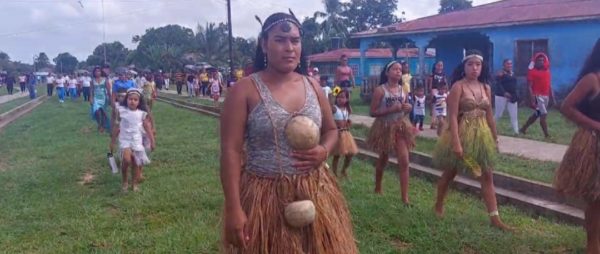Nicaragua: The “Ulwas”, Struggle to Keep their Culture Alive

‘Awawas’, now Karawala, is the place where the largest number of Ulwas are concentrated on the Nicaraguan Caribbean Coast
HAVANA TIMES – Recently the Ulwa peoples, living in the community of Karawala in the municipality of the mouth of Rio Grande in the Autonomous Region of the South Caribbean Coast (RACCS), commemorated 169 years of constant struggle to preserve their customs, ideology, roots, and their experiences and traditions, which are part of the rich culture of the Nicaraguan Caribbean.
Every year on May 6 the Ulwa celebrate their arrival in Karawala territory. Many of them had lived in Chontales and Matagalpa. They engaged in fishing, hunting and agriculture for survival. Since settling in Karawala they have concentrated on reviving their traditions and language, which have been lost by adopting other neighboring cultures.
“The Ulwas are the ethnic groups that came from the north side of Matagalpa. According to history, they were persecuted by the Spaniards. We have tried to survive in this area,” says a community member.
They were headed by a leader called the ‘Zuquia’, who possessed distinctive abilities and was known as the decision-maker in the community.

Ulwas, unique in the world
Indigenous culture is synonymous with rituals, ancestral dances, and their own language. A religious people, which according to historians, originated with the arrival of seven Ulwa families to the community of Karawala and now represent a large part of the population of the six ethnic groups that converge on the Atlantic Coast of Nicaragua.
“By means of this festival and these activities we are revitalizing our culture, the traditions, the customs that our ancestors had. Since the settlement of the seven families the Ulwas have grown. Today we live in Karawala and we are unique in the world,” says another community member who participated in the anniversary celebrations.

One of its best-known Ulwa traditions is the ‘Awawak’ dance, performed by seven elders representing the founding families of the community in Karawala.
Each elder wears different dress, which in general are very colorful; one may be wearing a tiger skin, while the others vary their attire with fabrics of vines, loincloths of palm leaves, tree bark shells, palm leaves, and bird feathers. They are also covered in mud.
They all dance to rustic instruments and demonstrate how their people farmed and hunted.
Afraid of losing their language
The community worries about losing their mother tongue since Miskito, Creole and Spanish are more common, often dominating other ethnicities when cultures intermingle in the Caribbean.
The Bicu and Uraccan universities have chosen to salvage the culture of each people by making their language, dialect, and customs visible through language courses. However, this requires developing strategies for promoting cultural revitalization to avoid further loss.
“A message to the Ulwa people of Karawala: Let’s try to strengthen our roots by speaking the language. We can celebrate year after year, but we have to strengthen the language,” says one member of the community.
Karawala is located about 104 kilometers from Bluefields, and the way to get there is by speedboat.
——–






it’s amazing to learn that there are indigenous cultures living under the same country, I knew about the Miskitu culture but the Ulwa is something that takes me by surprise.